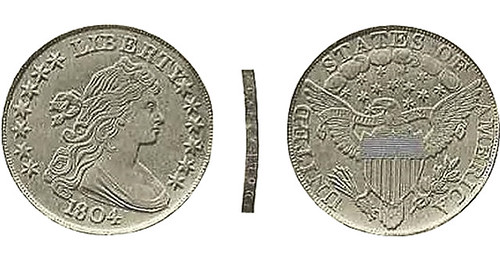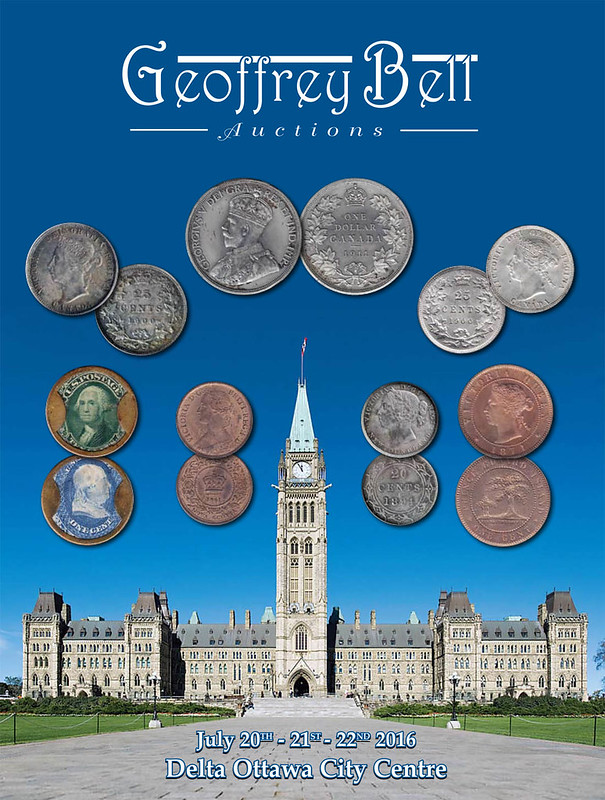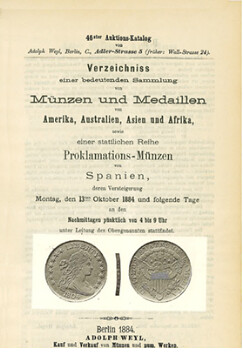
PREV ARTICLE
NEXT ARTICLE
FULL ISSUE
PREV FULL ISSUE
THE RARE AND IMPORTANT 1884 WEYL CATALOG
The Coin World article by David Stone, Zeke Wischer, and John Sculley discussed in the previous note from Mark Ferguson is nicely
done and worth reading in its entirety. Here's an excerpt. David Stone's copy of the Weyl catalog is illustrated. -Editor

Prominent coin dealer Adolph Weyl held his 46th auction in Berlin, beginning on Oct. 13, 1884, and concluding the following day. Although the sale mainly featured world coins, lots 94 to 387 were United States issues, including the first European auction appearance of an 1804 Draped Bust dollar, in lot 159. The lot was purchased by the Chapman brothers (Henry and Samuel H.) for a low price of $216 and sold by them to Colorado collector James Vila Dexter for a staggering $1,000 the following year. The huge profit the Chapmans realized and the mysterious origin of the coin caused Dexter to become suspicious of its authenticity. He filed suit against the Chapman brothers for fraudulently selling the coin, which he believed to be a recent restrike, and was only mollified after a prolonged legal scuffle, when affidavits of authenticity signed by various Mint officials convinced him the coin was genuine. Misconceptions about the sale have dogged numismatic researchers for the last 130 years. No copy of the Weyl catalog was available to Eric P. Newman and Ken Bressett when they published their landmark study, The Fantastic 1804 Dollar, in 1962. On page 92 of that remarkable work, they theorized that the Chapman brothers had laundered the coin through the Weyl auction, sending him an electrotype of the coin to photograph for the catalog, while really holding the actual coin in this country and authorizing him to outbid any other bidders at the sale on their behalf. The question of why no modern researcher had ever bothered to compare the Weyl plate to the actual coin continued to trouble Newman, however. He soon found that the catalog was virtually unobtainable. After a five-year search, he finally located a copy in the Austrian National Numismatic Collection in Vienna. After studying the image, he concluded that the coin in the picture was really the Dexter dollar, and not an electrotype after all. The extra “die cracks” in the image were actually thin cracks in the plaster cast used for the photograph, not on the surface of the coin, and the picture shows some diagnostic marks that conclusively identify the Dexter dollar. He also concluded that Weyl must have had the actual coin to photograph, as he felt the picture of the edge lettering could not be reproduced from an electrotype or plaster cast. Rubin suggests Weyl may have photographed the edge lettering of the coin to explicitly show that it was not a plain edge restrike from 1858 and did not have the seam on the side one might expect from an electrotype. This illustration is the earliest example of a photographic image of the edge lettering on any coin we are aware of, but it is possible that some earlier plates exist. Newman published his findings in the March 1970 issue of The Numismatist. Rarity of the Catalog
David Fanning informs us that this remains the only copy the firm of Kolbe & Fanning has offered at auction, but Ferguson reports he purchased a copy privately from George Kolbe’s booth at the 1996 American Numismatic Association convention. Charles Davis, an equally respected East Coast numismatic literature dealer, believes he sold a copy of this catalog privately at one time, but he has never offered one at public auction. The Oct. 13, 1884, Weyl sale is essential to our understanding of the history of the Dexter 1804 dollar, one of the most important coins in American numismatics. The elusive nature of the catalog made it difficult for numismatists to properly study the document in the past, leading to much confusion and adding to the lack of confidence 19th century collectors felt in all 1804 dollars, after the “restrike” abuses of the late 1850s. These misunderstandings led to unfortunate damage to the reputations of some 19th century coin dealers, like the Chapmans, who seem to have been innocent of the dishonest business practices of other dealers (like their mentor, John W. Haseltine), at least on this occasion. We hope this study has cleared up some of the misconceptions about the Dexter dollar. A better understanding of photographic techniques of the era should also clarify some questions about the image of the coin in the catalog. The 1884 Weyl catalog remains one of the rarest, most important, and enigmatic documents in the numismatic literature corpus. To read the complete article, see:

Wayne Homren, Editor The Numismatic Bibliomania Society is a non-profit organization promoting numismatic literature. See our web site at coinbooks.org. To submit items for publication in The E-Sylum, write to the Editor at this address: whomren@gmail.com To subscribe go to: https://my.binhost.com/lists/listinfo/esylum All Rights Reserved. NBS Home Page Contact the NBS webmaster 
|
